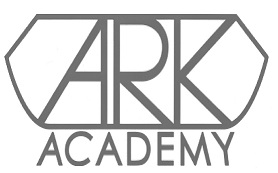 By Christopher
By Christopher
Certainly, one of the biggest challenges a foreigner will face living in Japan is reading and writing Japanese. The writing system is considered the most difficult to learn in the world, so difficult that many Japanese struggle to remember how to write the language. Native Japanese spend their whole educational career mastering the characters, so it seems like an impossible task for foreigners to be able to learn enough characters to even read a newspaper. It’s a frustrating feeling not to be able to read books at the library, fill out forms at the medical clinic, or even apply for membership at the video store. How can you know what you’re buying at the supermarket if you can’t read the label?
My former colleague in Osaka was an American who passed the highest level of Japanese language proficiency. He told me that he spent all his free time studying Japanese almost everyday for years. When he told me that, I realized in my heart that I would never read Japanese. I knew I didn’t have the time and energy to study and become proficient. I tried for awhile. Every morning I spent some time writing the basic first grade characters. Some of them I saw often enough that I remembered them. Some of them I just forgot.
More recently I’ve become friends with a Canadian who’s reading level in Japanese is very high. I didn’t ask him how he learned; I just assumed spent many long hours for years mastering the language. I respected his commitment, but I had no expectation that I could also learn to read Japanese.
Last week an American friend living here in Sanda showed me a book he was using called Remembering the Kanji by James W. Heisig. This author is a very clever man who realized that studying Japanese using the same method as the native Japanese was the worst way for a foreigner to learn to read and write kanji. He determined that the kanji were very logical pictographs so there must be a logical way to study them, learn them, and remember them. He realized that the system used by the schools in Japan contains none of the natural logic of the characters and therefore, that system should be avoided.
His system is a two part system. In his first book, he teaches the reader how to memorize the root meanings of the basic kanji (about 2000). Once a foreigner understands the meaning of the kanji, he or she will be like a Chinese person learning Japanese. The Chinese can learn Japanese quickly because of their understanding of the characters. A Chinese student only has to learn how to pronounce the sounds of the characters. The memorization techniques are stories using mnemonic devices to implant images that the student will not forget.
In one week, studying a little in my free time, I have learned the meaning of over 300 kanji and I’m fast on my way to learning the whole 2000 in the book. Not only have I learned them, but I remember them. Not only do I remember them, but I can write them too. Not only that, but I actually enjoy studying them. It feels completely different from using rote memorization, writing and writing the characters over and over, trying to study them again and again only to forget some of them and only remember a percentage.
After I learn the meaning, I will study book 2, and learn how to pronounce the characters.
Yesterday I asked my Canadian friend how he learned to read and write Japanese. I was surprised to learn that he used the same system I am using now. I’m completely optimistic that I can learn to read and write Japanese, and not in years but in only months.

Hello, i know its been a while since my last post 🙁 but its all over now.
I’ve finally finished my JLPT N3 exam. i realize that i coud’nt have done it without you!
Thank you for this book. iam grateful for your help and i will never forget this.
It’s people like you who make a true difference in this world!
and to you..
Hatsuho san, I just wanted to let you know how much I appreciate everything you did.
Thank you so, so much!!!
Sincerely,
Lizliza